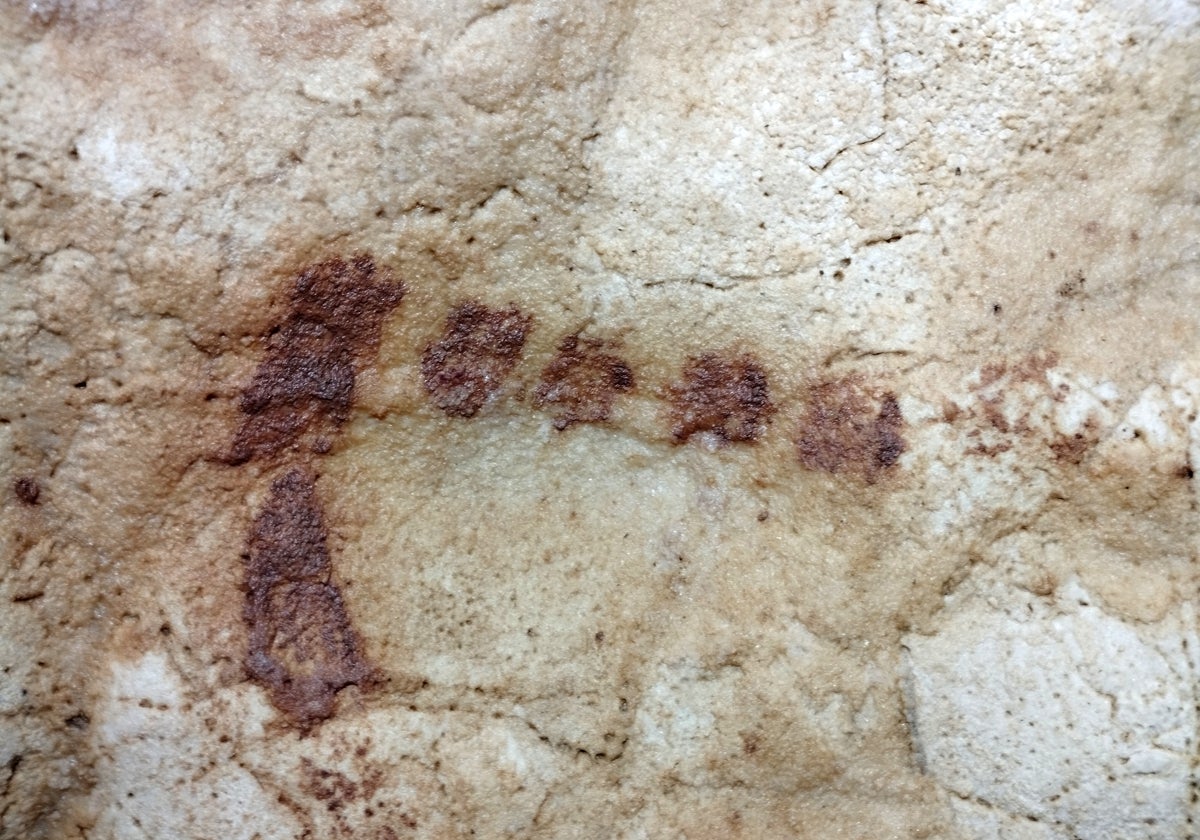International scientists search for more ancient cave paintings on Costa del Sol
A team of researchers has returned to Rincón de la Victoria's caves to analyse samples found in 2023 and seek more images that date back between 27,000 and 43,000 years
José Rodríguez Cámara
Rincón de la Victoria
Thursday, 5 June 2025, 19:27
An international team of researchers from the First Art scientific project has carried out new sampling in the La Victoria, El Higuerón and El Tesoro caves in Rincón de la Victoria on the eastern Costa del Sol.
The project that began in November 2023 led to the location of traces of rock art dating back between 27,000 and 43,000 years in the caves.
The group includes geologist and archaeologist Shao Qinfeng (Nanjing Normal University, China); researcher Sara Garcés (Polytechnic Institute of Tomar, Portugal) and archaeologist Hipólito Collado, director of the project and technician of the Junta de Extremadura. They have been joined by local experts including Luis-Efrén Fernández (Nerja Cave Research Institute), Professor José Ramos (University of Cádiz), geologist Cristina Liñán, biologist Yolanda del Rosal and researchers María del Mar Espejo and Pedro Cantalejo, responsible for research in the Ardales and Rincón de la Victoria caves.
"The samples were taken on red and black cave paintings, as well as on engravings with a calcium carbonate patina, a product of their extreme antiquity," Cantalejo explained. This type of mineral layer can be dated using the Uranium/Thorium method, a technique that has already been used in caves in Altamira, La Pasiega (Cantabria), Maltravieso (Cáceres) and Ardales. With this new project, which was carried out on 26, 27 and 28 May, the aim is to establish new dates and scientifically validate the results obtained at the end of 2023.
Rincón de la Victoria's councillor responsible for the caves, Antonio José Martín, explained that the main objective of the second visit was to obtain more samples and verify the age of the examples found in 2023.
Mayor of Rincón de la Victoria, Francisco Salado said that the findings "place us on the international map of research into the origins of Human Art" and as a "key enclave in European prehistory,"
He went on to say, "We will continue to support all scientific and conservation initiatives that guarantee the protection, study and dissemination of this unique legacy, convinced that culture and science are engines of development in our municipality."
Thanks to this work, the province of Malaga has established itself as a key epicentre in the study of the origins of Human Art. The richness and density of its cave heritage in caves such as La Pileta, El Gato, Ardales, Nerja and Rincón de la Victoria's caves make it an international reference point.
Furthermore, these discoveries point to the relevance of the southern Iberian Peninsula as a climatic refuge during the harsh conditions of the last ice age, which could explain both the presence of Neanderthal groups and possible early incursions of Homo sapiens from North Africa.
